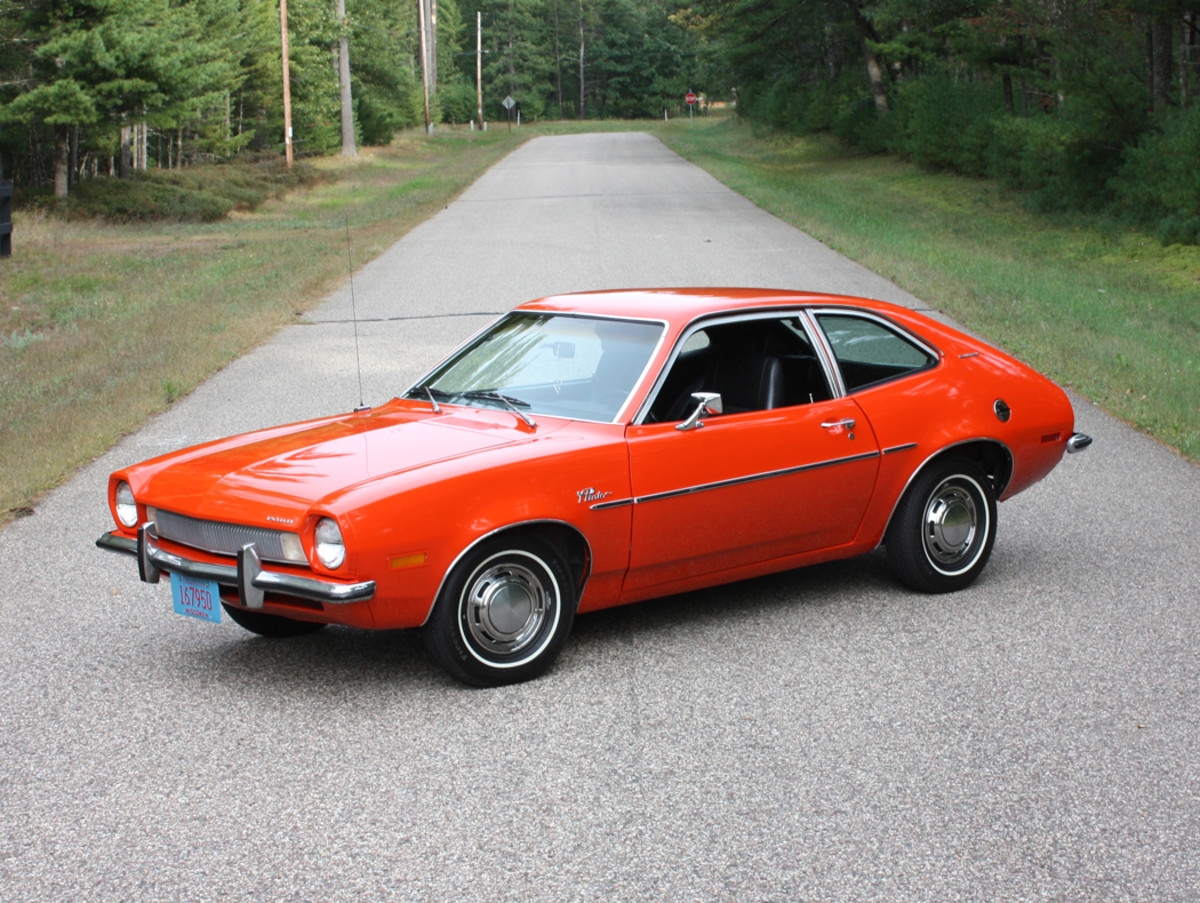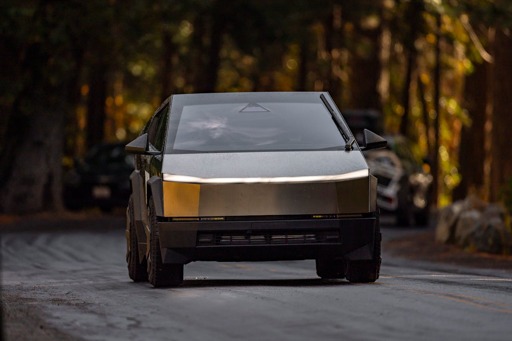TL;DR: The CyberTruck is 17 times more likely to have a fire fatality than a Ford Pinto
If I had a nickel for every time a car company owned by a nazi sympathizer who wants to found his own exploitive company town made an infamously fiery car that you can hear rusting, I’d have two nickels. Which isn’t a lot, but it’s weird that it happened twice.
Not saying Ford wasn’t an exploitative nazi sympathizer, he was. But can’t leave the Dodge brothers out of some of the blame while you’re handing it out. They’re the whole reason companies have to put shareholders first, after they sued Ford for trying to invest dividends back into the company and employee wages.
I didn’t have Ford Pinto vs Cybertruck on my Battle of Vehicles bingo card.
Okay but I kinda need to know what is on that card set
VW Vanbus stronk.
Reading this I heard a pakled
deleted by creator
Since I’m half-intelligent, I won’t pretend to understand most what you’re saying here.
I don’t think the article linked is nonsense, though. It certainly isn’t leftist anything, miss me with that.
But… importantly… There is a statistically correct way to complete the following sentence:
“The Tesla Cybertruck is ______ times more/less explosive than the Ford Pinto.”
If you disagree with my answer to that question, what is your answer? I showed my math, I even invite the readers to re-run the equation. If you re-run it, what do you come up with? I bet your answer will be informative and helpful to the conversation about EV safety, two elements that are the “sugar,” “spice,” and “everything nice” about good reporting.
Um yeah I just perused the source website and agree. It’s got an obvious anti-EV bias in both article sections, headlines and interpretations of data. The only author they seem to have for all their ‘news articles’ is a person that doesn’t even have the guts to sign off with their real name, instead using the alias ‘Kay Leadfoot’. They don’t even have an ‘about’ page, just a contact form.
This is just the blog of some dude that hates EVs. Hot garbage source.
Hey, boss… If you say my name and don’t knock on wood, I show up.
This place seems nice! I might post here in the future.
I do not hate EVs. Read my reviews of the Tesla Model 3, the new Dodge Charger EV, and the F-150 Lightning. If you don’t like to read, the TL;DR is that I very much like each vehicle. Like many pickup truck people, I specifically do not like the Cybertruck, but that’s because it’s a lousy vehicle.
You should keep an open mind - just because you disagree with me, doesn’t mean I have some unreasonable bias. I may have followed evidence to a different conclusion.
I do smile when Tesla fans ask me to announce my name. I already did! I’m Kay Leadfoot. You can learn more about me on my About page, which has definitely been there since Day 1. Unrelated to anything, please don’t call me dude.
Hi, you took the time to respond i feel i owe you the courtesy of a reply.
Reading your website initially I could see a lot of pro gas-vehicle articles and negative EV articles, I didnt really focus on brand - not a fan of Tesla myself, and obviously the CT is a piece of crap. I’ll take you at your word that you dont hate EVs but I think if you got a few people to review your site they may also walk away from a quick look through it as ‘oh this is an anti-EV site’; lots of loaded language that’s positive to gas cars and lots of Tesla bashing. People are not going to read every article and notice that there are a few EVs that you’re very fond of before deciding if your page contains useful objective info or if it’s a just another biased source.
Regarding your About page (I’m on mobile), if I click the Menu button I get a drop-down that shows an ‘About us’ with a little down-arrow on it -> if I click ‘About us’ a menu drops down showing: drop us a line / best of / search / subscribe.
I checked each of those options and couldn’t find any info about the organization, or you the writer. Now you say you have an ‘about page’ so I go back today and I find if I click on the ‘about us’ drop down menu a second time, it opens a new page. Friend, congrats, you have made a secret About Us page. I have never seen this kind of design in a very long time browsing the internet.
Anyway, now that I’m here there’s no credentials or references (some mention of being published on other websites - but no links to those articles), beyond saying you have driven a few hunded thousand miles - and your name is still clearly a pseodonym. Journalists generally build faith in their audience by using their real name, it’s a red flag is all.
I hope that clarifies my statements, they were not arbitrary or intended to be malicious or unfair. Even negative feedback can be constructive and that’s the spirit of this message.
No worries, boss. Not taken as mean or unfair.
Out of curiosity… what credential would make you trust an automotive journalist more? If it’s academic paper, I’m S.O.L.
The About Us, I didn’t realize folks would have a hard time finding it if it were in the header! What do I know about websites, right. But I can fix that, I’ll duplicate the About Us entry into the dropdown, that should clear up any confusion.
I’m not trying to win you over, that’s not really my bag… but you might find this interesting. I’ve had a couple folks, some with recognizable names, reach out to me through the website. The pitch is a little different each time, but they all seem to want to know my name, they share your view that it ISN’T Kay Leadfoot. I wonder why they’re so interested about that? Haha, I’m sure they wouldn’t publish it if I told them, they seem trustworthy… Some folks start with a more direct approach, and they just hit me with the threats from the word go, and THEN get to the “we’ll see you soon” part. I wonder what those two groups would do if one knew who I was, and the other WANTED to know?
Ain’t that funny? I tell jokes about cars, who cares who I am? Apparently, several folks care, some of them real ornery about it. It’s less funny when you think about the actual journalists who don’t have the same options… the wave after wave of threats probably has a chilling effect on their coverage, god knows what that does for a democracy in general if your press core is afraid to speak their mind and follow facts wherever they go in case some crazies come knocking.
Thanks for the feedback, by the by, it helps.
Downvoted the parent post to help.
deleted by creator
While i agree with your intent here i thing we should rather begin with a more thoughtful criticism of the articles, rather than criticizing the websites name or if it’s vibe can be considered pandering.
Like how the statistics used is hyperbolic in it’s conclusions. While 34,438 produced cars are many, but not loads in car terms (especially when compared to the 3,173,491 built Pintos) and the there have only been two actual accidents with fire fatalities leading to 4 deaths. (The Vegas firebombing should not count.) Sure it’s two to many but it’s not really significant.
On the other hand the article does point out something here, “only” 27 deaths did lead to a huge recall, and i for one am not sure that a company that have yet to commit for a NHTSA will adhere to a similar standard. And fire safety over all has been a long concern in Tesla cars.
Thanks Iceman. I loved your work in Top Gun.
I think you touch on something important here. Some folks say the sample size is too small, on a strict statistical basis. Automotive safety works on different scales, often fast-paced decisions are made about auto safety and we don’t wait around for “statistical significance” in an academically rigorous sense.
Ironically, the smallest production run of cars to receive a recall in the United States (that I could find) was… the Ford Pinto, because the accelerator pedal got stuck! That was its first year of production. All 26,000 were recalled 2 months after the model was released.
DOUBLE ironic… the smallest production run of pickup trucks to receive a recall in the United States (that I could find) was… the Tesla Cybertruck! ALSO because the accelerator pedal got stuck! All 4,000 were recalled a few months after deliveries started at scale, in the first full year of production.
Isn’t that funny? History doesn’t repeat itself, but it is basically a dirty limerick. And what an awful chapter of automotive history to repeat, our vehicles should be vastly safer in 2025 than they were in 1971.
Considering that statistically sigificant numbers here would be writen in blood a low threashold “better safe than sorry” approach deffintely is for the better.
And these are some crazy stats you found, thanks for posting that.
I just discovered… a scientist tested my findings! Well that’s real nice, we held up with statistically significant findings.
And the Pinto is actually cool looking.


Never forget that Chrysler did the exact same thing with the Grand Cherokee that resulted in deaths and never faced accountability.
Ten times faster to rust out on ya too lol
For those who don’t know about the Pinto:
In 1978, Ford recalled 1.5 million Pintos because the fuel tank was prone to rupturing in rear-end collisions at speeds of 20 mph or higher. This was the largest recall in automotive history at the time.
To be more specific, the fuel tank was placed between the rear bumper and rear differential. In a rear end collision, the tank would get sandwiched by the bumper and differential, which had bolts protruding out the back and would pierce the tank, spilling fuel onto the road.
Additionally, rear end collisions would bend the frame in a way that jammed the doors so you couldnt get out.
They figured that people would die and their cost benefit analysis assumed a certain number of deaths and lawsuits. The resulting recall and larger than expected number of deaths and lawsuits made it a huge loss for them.
Wherever I’m going, I’ll be there to apply the formula. I’ll keep the secret intact.
It’s simple arithmetic.
It’s a story problem.
If a new car built by my company leaves Chicago traveling west at 60 miles per hour, and the rear differential locks up, and the car crashes and burns with everyone trapped inside, does my company initiate a recall?
You take the population of vehicles in the field (A) and multiple it by the probable rate of failure (B), then multiply the result by the average cost of an out-of-court settlement ©.
A times B times C equals X. This is what it will cost if we don’t initiate a recall.
If X is greater than the cost of a recall, we recall the cars and no one gets hurt.
If X is less than the cost of a recall, then we don’t recall.Chuck Palahniuk, Fight Club
That design is even worse than I realized. It’s fucked that didn’t put them out of business honestly
Top Secret (1984) made fun of Ford Pinto

As a European who knew nothing about Ford Pinto, I thought they made fun of how cars always explode in movies.
“Tort Museum”
Only in America
The cool thing is when you set records. Being the most anything is awesome.
It’s sarcasm, leave me alone.
How much of that is down to the electronic door locks keeping people from escaping?
New existential fear unlocked!
Thanks, dude.
No problem. steal $400 million from the taxpayers, clear the inventory - problem solved.
All caps doesn’t make your post more interesting. Just annoying.
The title of the article is in all caps. I copied and pasted it into the post field.
My childhood car was a Pinto. I was very grateful it never blew up when I read about the issues many years later.
The majority of them had a recall to fix the lack of armor on the gas tank.
Wasn’t that just some PVC pannels zip-tied behind the tank?
it fixed the problem
Most of them had some rust issues and it was easy to replace the tank with a much better one anyways
I knew a girl in highschool who had one. Her dad had customized the shit out of it… put a V8 in the hatchback trunk … that think was a fucking rocket










